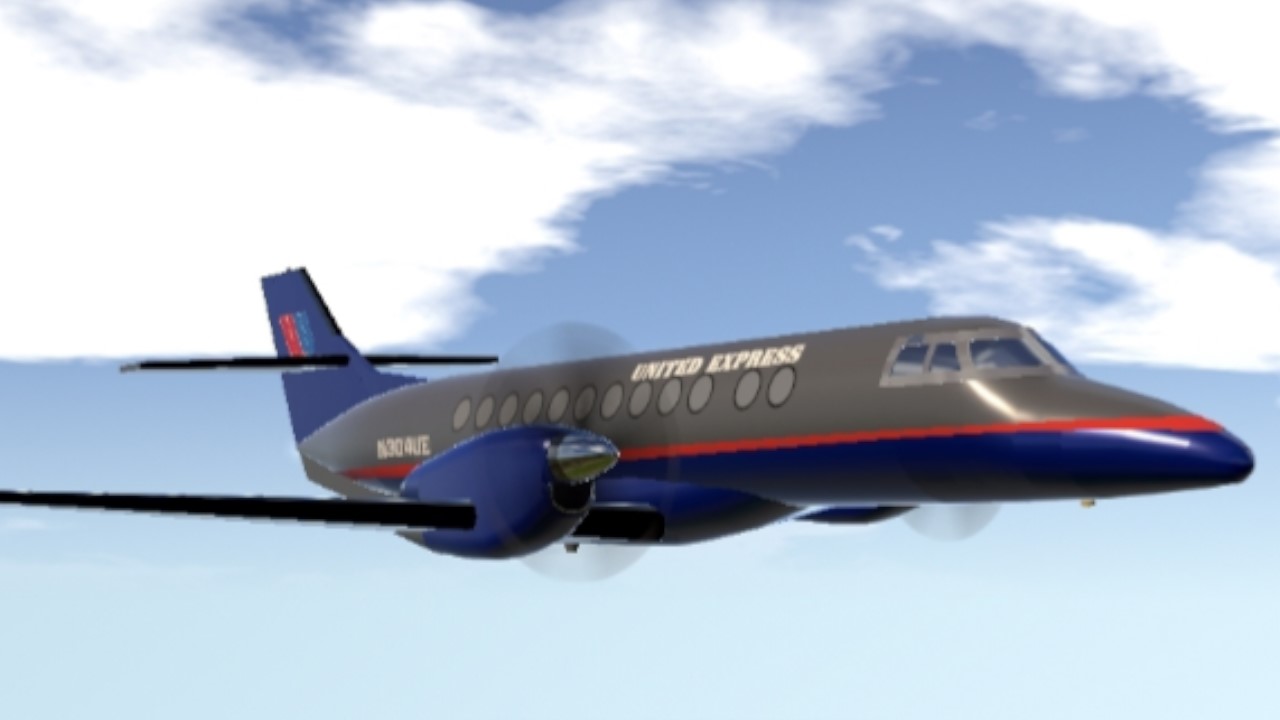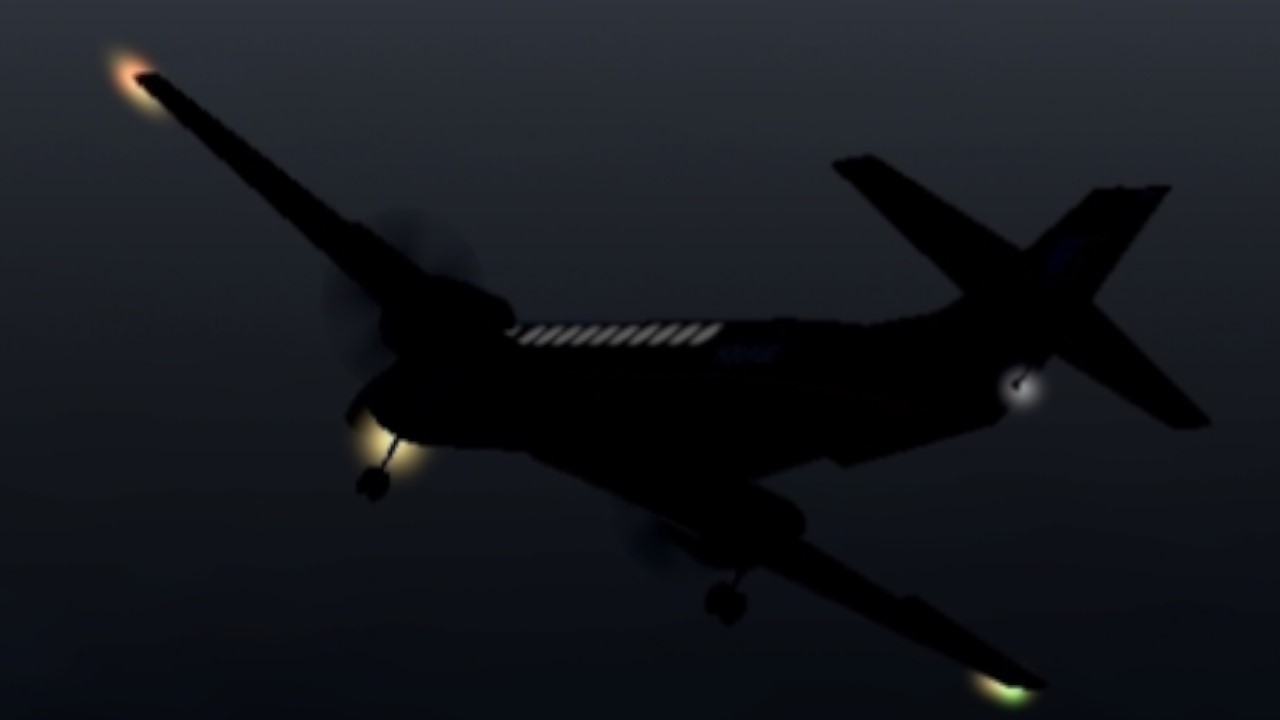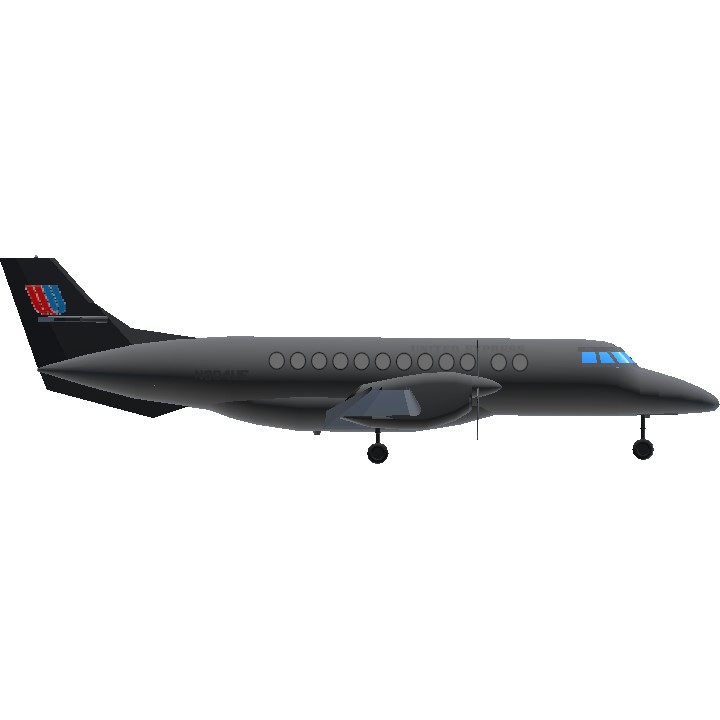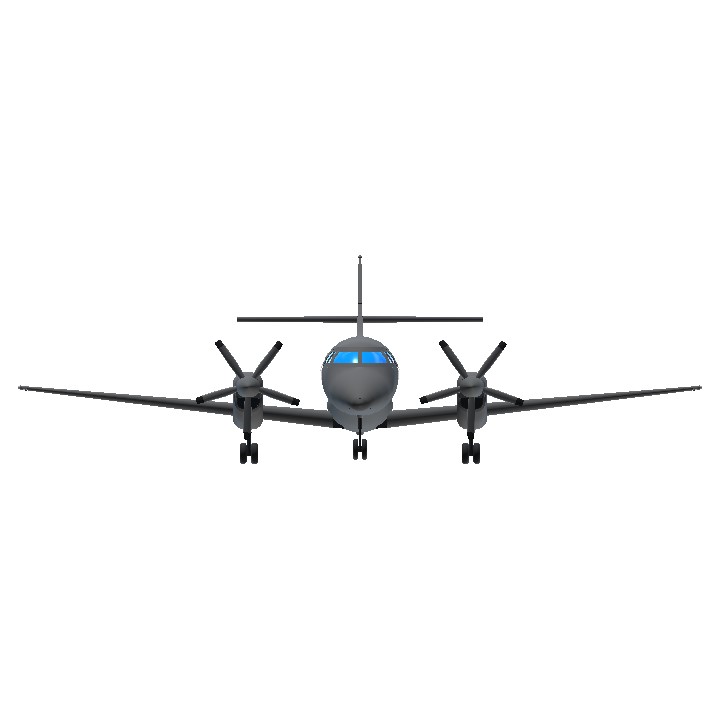Note: Oop Autocredit not working since this is a recycled deleted livery :/, btw heres the original
Btw no controls
About Bae Jetstream 41:
The British Aerospace Jetstream 41 is a turboprop-powered feederliner and regional airliner, designed by British Aerospace as a stretched version of the popular Jetstream 31. Intended to compete directly with 30-seat aircraft like the Embraer Brasilia, Dornier 328 and Saab 340, the new design eventually accommodated 29 passengers in a two-by-one arrangement like the Jetstream 31. Eastern Airways of the UK is the biggest operator of Jetstream 41s in the world, with 14 in the fleet.

The Jetstream 41's stretch added 16 feet (4.9 m) to the fuselage, consisting of an 8-foot-3-inch (2.51 m) plug forward of the wing and a 7 feet 9 inches (2.36 m) plug to the rear; the fuselage design was all-new with no commonality with the old fuselage. The wing had increased span and redesigned ailerons and flaps. It was mounted below the fuselage, so the spar did not form a step in the cabin aisle. This also gave more baggage capacity in larger wing-root fairings.
The Allied Signal TPE331-14 engines deliver 1,500 shp (1,120 kW), (later 1,650 shp (1,232 kW)), and are mounted in nacelles with increased ground clearance. The flightdeck is improved with a modern EFIS setup, and a new windscreen arrangement. The J41 was the first turboprop certified to both JAR25 and FAR25 standards.
The J41 flew for the first time on 25 September 1991 and was certified on 23 November 1992 in Europe, and 9 April 1993 in the United States, with the first delivery, to Manx Airlines on 25 November 1992. In January 1996, the J41 became part of the Aero International (Regional) (AI(R)), a marketing consortium consisting of ATR, Aérospatiale (of France), Alenia (of Italy), and British Aerospace. Sales initially were fairly strong, but in May 1997 BAe announced that it was terminating J41 production, with 100 aircraft delivered.
About United Express:
United Express is the brand name for the regional branch of United Airlines, under which five individually owned regional airlines operate short- and medium-haul feeder flights.

On October 1, 2010, UAL Corporation and Continental Airlines merged to form United Continental Holdings, the holding company for the newly merged United Airlines. On June 27, 2019, United Express changed its parent company name from United Continental Holdings to United Airlines Holdings. As of 2023, 519 aircraft fly under the United Express brand.
About United Express Flight 6291:
United Express Flight 6291 was a regularly scheduled United Express flight from Dulles International Airport near Washington, D.C. to Port Columbus International Airport in Columbus, Ohio. It was a service operated by Atlantic Coast Airlines on behalf of United Express.

A United Express Jetstream 41, sister ship to the accident aircraft
Late on the night of January 7, 1994, the British Aerospace Jetstream 41 operating as Flight 6291 stalled and crashed on approach to Port Columbus International Airport. The two pilots, the flight attendant, and two passengers died in the crash. The surviving passengers were a Taiwanese family of three.
Accident:

NTSB diagram of Flight 6291's flight path
Flight 6291 left the gate at Dulles at 9:58 p.m. EST for the 90-minute flight to Columbus. The crew consisted of captain Derrick White (35), first officer Anthony Samuels (29) and a 58-year-old flight attendant. There were five passengers on board.
At 11:10 p.m., Columbus approach control was contacted. The captain advised the controller that the aircraft was descending through 13,200 ft (4,000 m) to 11,000 ft (3,400 m). The controller assigned a 285-degree heading to intercept the instrument landing system (ILS) for Runway 28L and cleared Flight 6291 to 10,000 ft (3,000 m). An updated weather report at 11:15 p.m. reported a cloud overcast 800 ft (240 m) above the ground, visibility 2.5 miles (4.0 km) in light snow and fog with wind 300 degrees at 4 knots. A Runway 28L ILS approach clearance was issued when the flight passed the SUMIE final approach fix. A clearance to land on Runway 28L was granted two minutes later.
The aircraft was descending through an altitude of 1,250 ft (380 m) when the stick shaker activated and sounded for 3 seconds. After 1.5 seconds, the stick shaker sounded again. The aircraft continued to descend below the glide slope until it collided with a stand of trees in a high nose-up attitude. It came to rest upright in a commercial building, 1.2 mi (1.9 km) short of the runway. After the impact, a fire started in or near the left engine, which spread to the rest of the aircraft. At least four of the passengers survived the crash, but only three escaped before the aircraft was fully engulfed in flames. The survivors' escape was slowed when they experienced difficulty releasing their seatbelts.
Investigation:
The National Transportation Safety Board (NTSB) investigated the crash and released a report on October 6, 1994 that faulted the crew and Atlantic Coast Airlines. The pilots followed a poorly planned and executed approach and then improperly responded to a stall warning, and they lacked experience with electronic flight instrument systems. The airline failed to provide adequate stabilized approach criteria, suitable training simulators and crew resource-management training.
The report recommended that the type of seatbelts used in the Jetstream 41 should be removed from aircraft, and that certification of future seatbelt designs include a test matching the conditions that were experienced during the accident.
Specifications
General Characteristics
- Successors 1 airplane(s) +28 bonus
- Created On Android
- Wingspan 102.0ft (31.1m)
- Length 107.5ft (32.8m)
- Height 31.2ft (9.5m)
- Empty Weight N/A
- Loaded Weight 62,487lbs (28,344kg)
Performance
- Horse Power/Weight Ratio 0.064
- Wing Loading 42.9lbs/ft2 (209.3kg/m2)
- Wing Area 1,458.0ft2 (135.5m2)
- Drag Points 10818
Parts
- Number of Parts 117
- Control Surfaces 7
- Performance Cost 581







Good work
@sharkpuppet808 ill work it soon, long time no see.
or Trigana Air Flight 267 rework atr 42 by mapa
can you make a turbo lines atr 42 just tell mapa
@AverageFedExMD11 it says this:
Strike Harrasment of other users will not be tolerated, repeated offenses will result in harsher consequences. Using alts to evade blocks is against site rules.
can you describe the image?
@Transair56 its banned in my country
@Transair56 cant see it.
@AverageFedExMD11 nah for this:

@Transair56 lemme guess, for being too dark?
@AverageFedExMD11 I got banned
@AverageFedExMD11 yas
@Transair56 your back!?!?!?
Cool
It's much better than mine
Incredible
BATTLESHIP GREY RETURNS!
My fav livery